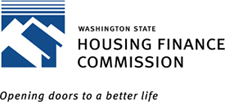- Homeownership
- Multifamily Housing
- Nonprofit Facilities
- Special Programs
- Property Managers
- For Investors
JULY 2016 | DOWNLOAD PDF | CURRENT ISSUE | PAST ISSUES
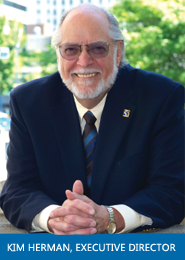
Local Housing Levies: “We Know What Works”
The landmark Seattle Housing Levy is on the ballot for renewal in August. Meanwhile, other Washington communities are following Seattle’s example and developing their own local tax initiatives to fund affordable housing.
 In this issue of My View, I’ll review the Seattle Housing
Levy’s past accomplishments and future plans. I’ll also talk about
Bellingham’s Home Fund, the successful housing levy passed by its voters
in 2012. Finally, I’ll share perspectives from people helping to carry
that example forward in Thurston County, Vancouver, and Spokane County
by building the case for housing levies of their own.
In this issue of My View, I’ll review the Seattle Housing
Levy’s past accomplishments and future plans. I’ll also talk about
Bellingham’s Home Fund, the successful housing levy passed by its voters
in 2012. Finally, I’ll share perspectives from people helping to carry
that example forward in Thurston County, Vancouver, and Spokane County
by building the case for housing levies of their own.
Homestead Community Land Trust: The Garcia family (right) bought a home through the Homestead Community Land Trust with support from the Seattle Housing Levy.
The Seattle Housing Levy: An inspiring track record | Seattle Housing Levy So Far: Facts and Figures
The Home Fund: Breathing new life into housing for Bellingham | Bellingham Home Fund: Facts and Figures
Building the Case Around the State | Olympia, Lacey, and Tumwater | Bringing Vancouver Home | Spokane County
Pierce County: Local Housing Fund “A Heavy Lift”
Local Support Critical for Federal Support
top /\
The Seattle Housing Levy: An inspiring track record
We know what works. These four words from Seattle Mayor Ed Murray speak volumes. Over the past 35 years, the achievements of Seattle’s taxpayer-supported housing levy have been profound. These include, when combined with other city funding, the creation and preservation of more than 12,500 affordable homes, providing downpayment assistance for 900 low-income families, and providing emergency rental assistance for 6,500 families.
“Expanding the Housing Levy is the most important thing we will do this year to support affordability in Seattle. We know what works—build more affordable homes for low-income families, preserve the affordable housing we have, and keep people from falling into homelessness—and we must renew our commitment and expand the levy so we can do even more.” --Mayor Ed Murray
“The Seattle Housing Levy has been the heart and soul—the foundational funding for affordable housing in the city,” says Steve Walker. Steve, my former long-term colleague at the Commission, has served as director of Seattle’s Office of Housing since early 2014.
Beginning with the original bond issue to support affordable senior housing in 1981, and continuing with four subsequent levy successes, the levy “has a track record built on success and achieving the goals that voters put forward in each of those ballot initiatives,” Steve says. "It’s recognized throughout the country as an amazing local commitment that few communities have been able to match.”
top /\
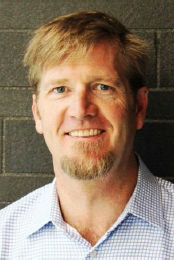
“The Seattle Housing Levy has been the heart
and soul—the foundational funding for affordable housing in the city.”
STEVE WALKER
Office of Housing Director,
Seattle
Seattle was the first in the nation to fund affordable housing with property taxes. Indeed, all of us who work here in affordable housing are accustomed to the amazement of our colleagues across the U.S.: How has Seattle managed to achieve such a rich history of its citizens voting to fund affordable housing again and again?
A big part of the answer, I believe, is that each successive levy has accomplished what its framers promised—and more. Each has been able to prove its value in giving Seattle a fighting chance at remaining affordable to people from all walks of life.
These levies have helped to preserve historic buildings for affordable housing, prevent the displacement of residents, and protect the character of neighborhoods. They have created a safety net for many of the most disadvantaged. They have acted as seed funding, attracting a range of other sources of investment for affordable housing. And, with each new levy iteration, those who manage this funding have become increasingly skilled at getting the best possible return on taxpayers’ investment.
Raising the bar in 2016
Mayor Murray has proposed an expansion of the Seattle Housing Levy to $290 million over the next seven years—that’s double the $145 million raised by the 2009 levy.
The Seattle levies have always had strong and passionate support from community leaders and elected officials (as explored in our March 2009 issue of My View), and the latest one is no different. Mayor Murray’s proposal was endorsed with a 9-0 vote from the Seattle City Council in May. It includes $201 million for the production and preservation of 2,150 affordable apartments; $42 million to support the operations of 510 apartments for those at the lowest income levels; $11.5 million to prevent homelessness through short-term rental assistance and stability services; and $9.5 million to assist 280 low-income homeowners and homebuyers.
Like each one before it, the levy is designed to respond to current economic conditions. The 2009 levy addressed the recession and its hardships—but in 2016, the pressures of growth are the predominant challenge.
top /\

“The Seattle Housing Levy is one of the most
powerful tools that we have for leveraging other resources.”
MARTY KOOISTRA
Executive Director,
Housing Development Consortium of Seattle-King County (HDC)
In fact, the 2016 Seattle Housing Levy is seen by the mayor and other Seattle leaders as a critical piece of a larger, comprehensive response to Seattle’s escalating housing costs and stagnant wages for lower-income people. The mayor’s Housing Affordability and Livability Agenda (HALA), Steve says, has created a conversation about how to achieve a city that is inclusive, affordable, and livable for everyone. “The levy is a foundational part of that, but it’s just one of a number of tools that we need,” Steve says.
The levy has been positioned to prioritize Seattle’s most vulnerable populations, including the disabled, the homeless, and families at risk of homelessness, though Steve says it includes a “set of tools” that can serve the low-wage workforce and a broader spectrum of incomes. As Seattle continues to get national media attention for its ramped-up economic growth and dizzying upsurge in housing costs, “we’re trying to prove that it’s not too late.”
Leveraging three to one
I spoke with Marty Kooistra in early May, soon after the official launch of the new levy campaign, Yes for Homes. Marty is serving as a co-chair of the campaign; he is also executive director of the Housing Development Consortium of Seattle-King County (HDC), which represents a membership of some 127 for-profit, nonprofit, and government entities involved in creating and advocating for affordable housing.
Marty emphasizes the robustness of the steering committee process that has determined the new levy’s targets. Since last fall, HDC members have been highly engaged; it’s been an inclusive process with input from a wide range of housing and service providers. Says Marty, “We’ve had significant input from across the spectrum in coming up with a thoughtful proposal and a very strong levy package—in partnership with the Office of Housing, with the mayor and the city council.”
For Marty and the HDC membership, the funding from past levies has been essential to get housing projects off the ground. “It’s one of the most powerful tools that we have for leveraging other resources like the Low Income Housing Tax Credit (LIHTC) and the state Housing Trust Fund (HTF), he says. Levy funds typically represent first-dollar commitments. “This allows projects to access a pipeline of additional resources.”
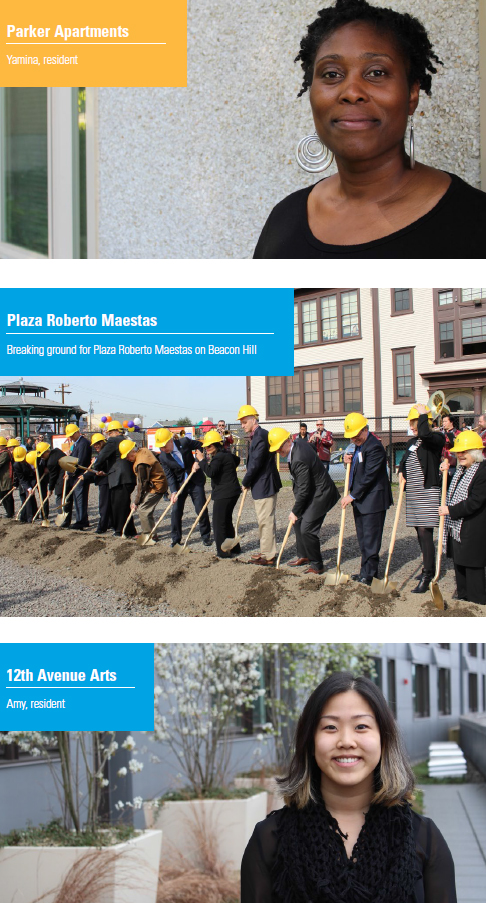 Steve elaborates on the leveraging effect of levy funds: “For every
local dollar this funding contributes, we’re able to leverage three
additional dollars from other sources.” That three to the levy’s
one
comes from a range of public and private sources, notably the HTF and
the LIHTC, but also private investment, philanthropy, the United Way,
for-profit lending, and ongoing Section 8 rental subsidies. The point
is, without that first commitment with levy funds, many worthy projects
wouldn’t be here today.
Steve elaborates on the leveraging effect of levy funds: “For every
local dollar this funding contributes, we’re able to leverage three
additional dollars from other sources.” That three to the levy’s
one
comes from a range of public and private sources, notably the HTF and
the LIHTC, but also private investment, philanthropy, the United Way,
for-profit lending, and ongoing Section 8 rental subsidies. The point
is, without that first commitment with levy funds, many worthy projects
wouldn’t be here today.
“We put our marker down first—and have been very successful at securing additional resources at that level of three to one,” Steve says.
Sustainability, operations support—and great stewardship
Getting affordable properties built is just part of the Levy story. For people of limited resources, the amount of rent they can afford to pay typically isn’t enough to support the ongoing operations of rental properties. Operating and maintenance (O&M) funding has been a growing commitment of the levies, starting in 1986 with a budget of $5 million. In the 2016 levy proposal, $42 million has been budgeted to support operations for 510 apartments. Once again, this support is targeted to the most vulnerable. “These operating subsidies through the levy, in addition to the capital dollars to build units, are a very powerful tool when utilized together,” Steve says. “This commitment enables the Levy to serve those with the highest needs and fewest resources.”
Another strong emphasis of the 2016 levy is the preservation of the existing portfolio, which now includes more than 12,000 affordable rental apartments. And that portfolio is aging. Through practical experience and also with the help of a MacArthur Foundation grant at the time of the 2009 levy, the Office of Housing and its partners have deepened their understanding of how to effectively manage and monitor this portfolio.
“More often today than in the past, we’re touching our buildings for a second time, strategically recapitalizing them and, in partnership with other funders, extending their life beyond 50 years,” Steve says. “When we do so we’re also extending the affordable use restrictions on those buildings.” The MacArthur investment, he says, “initiated a deep dive into the portfolio. That has created a new capacity in this office. We’ve honed our skills internally to be good stewards of the affordable housing assets, in partnership with building owners and operators.”
These assets offer a strong proof of value to Seattle’s residents, Steve says. “They are a public investment. We have a very compelling story to tell about how well these levy buildings are performing and how wisely these funds have been applied.”
Protecting the character of communities—and preserving affordability
Steve brings up an area of stronger emphasis in the 2016 levy: displacement prevention. It’s a goal for both the rental program and the homeownership program—helping to prevent low-income people from being pushed out of their communities by rising housing costs.
Since it was added in 1995, homeownership support has represented a relatively small but important component of each levy. Much of that funding has been directed to downpayment assistance for first-time homebuyers—in collaboration with the Commission’s home-loan program, which provides matching funds.
top /\
Seattle Housing Levy So Far:
Facts and Figures
Here’s what the Levy had accomplished by late 2014 (the most recent
numbers available):
![]() 12,607 affordable housing units built with Levy funding
12,607 affordable housing units built with Levy funding
![]() 6,500 families
have accessed emergency rental assistance to prevent homelessness
6,500 families
have accessed emergency rental assistance to prevent homelessness
![]() More than 900 families purchased a home using downpayment
assistance—394 of them through the Commission’s partnership, House Key
Plus Seattle.
More than 900 families purchased a home using downpayment
assistance—394 of them through the Commission’s partnership, House Key
Plus Seattle.
![]() In 2014, 62 organizations were engaged in 280 projects funded by the
Levy
In 2014, 62 organizations were engaged in 280 projects funded by the
Levy
2016 Seattle Housing Levy: Proposal to Voters
Total:
$290 million over 7 years
Median cost per household:
$122 per year
Main programs and proposed budgets
Rental Production and Preservation: $201 million
Operating and Maintenance: $42 million
Homelessness Prevention and Housing Stability Services:
$11.5 million
Homeownership: $9.5 million
Acquisition and Preservation: Up to $30 million
Short-term loans for buildings (priority: occupied buildings) or land
for development of housing for people earning up to 80% AMI.
Administration: $26 million
However, Steve says, “We’re also looking at ways to help existing homeowners stay in their homes—and remain connected to their social networks and cultural networks.” His office envisions providing home-repair loans or grants, and helping to stave off foreclosures. “This is an opportunity that we’ll explore in this levy with some of the homeownership resources that have been carved out.”
As for preserving rental housing, the Office of Housing may offer low-interest building loans and grants for repairs in privately owned buildings, in exchange for preserving rental affordability. “We see this as a line of business that could be very effective to create and maintain affordability, and a potentially powerful anti-displacement tool,” Steve says.
Ending and preventing homelessness
Another essential aspect of the Seattle Levy is addressing Seattle’s homelessness crisis. By contributing to permanent supportive housing for the chronically homeless, the levy has helped pioneer “Housing First” developments. It has also successfully partnered to build supportive rental housing for homeless families with children.
Meanwhile, preventing homelessness through emergency assistance to low-income families is also a critical part of the levy’s commitment. This category, added in 2002, is more than doubled in the 2016 levy proposal and includes new and more flexible strategies. Solutions will vary from family to family to help solve an imminent housing crisis. Seattle’s Human Services division is partnering with the Office of Housing in this effort. “Our aim is to work upstream: keep people housed and prevent them from falling into the crisis of homelessness,” Steve says.
Refinements like these to the Homeless Prevention Program are the exception rather than the rule. Seattle’s leadership and the more than 60 agencies that help implement levy-funded housing and programs know what works. The positive impacts of the Seattle Housing Levy are experienced by many thousands of individuals every day, in every neighborhood of Seattle.
“We need to keep doing what we’re doing, with some slight changes to adapt to the current environment,” Steve concludes. “We’ve gone through a very expansive process with our stakeholders, the mayor, and the city council. At the end of these discussions, we’ve come right back to the fact that, over the course of its history, Seattle’s Housing Levy has demonstrated and developed a set of programs and tools that have proven themselves to be extremely effective.”
Winning over voters is the next task for advocates and partners like the HDC and Marty. “Our primary work right now is generating resources and mobilizing our stakeholders, whether that’s door-knocking or phone-banking or raising the dollars we need to cover costs,” Marty says. “Even though we’ve never had as heightened a sense of awareness among the public about this crisis of affordable housing, we can’t just rest on our laurels.”
top /\
The Home Fund: Breathing new life into housing for Bellingham
As our state’s housing affordability gap for low-income people has grown, public awareness has grown, too. Yet asking taxpayers to vote to tax themselves in support of any initiative, regardless of how meaningful its impact, is never a small undertaking. Leadership is required, from both elected and public officials, as well as citizens who see the need and commit themselves to making the case to their community.
Fortunately, the City of Bellingham has had all the right ingredients, too. In 2012, Bellingham’s voters passed their very first housing levy, the Home Fund, with 57 percent of the vote.
The Seattle Levy was the model
Greg Winter, who was co-chair of the Bellingham levy campaign, tells the story. Currently the executive director of the Opportunity Council, Greg formerly served for eight years as director of Whatcom Homeless Service Center, the county’s coordinated entry system (managed by the Opportunity Council). At the time of the levy campaign, he was also chair of the Whatcom County Coalition to End Homelessness.

“It was clear that people supported it
because they wanted to help others—and they knew there were people who
really needed the help.”
GREG WINTER
Executive Director,
Opportunity Council
The journey to passage began in 2008, when the mayor of Bellingham and the Whatcom County executive convened the County-Wide Housing Affordability Task Force (CHAT), a large multi-stakeholder group. Task force members met close to 50 times over the course of about two years, Greg says. CHAT ultimately published its findings, which included six major recommendations. Recognizing the need for housing for very-low-income households, the report suggested that this would require subsidizing that housing—and that a new source of local revenue would be necessary to help leverage other revenue streams like the LIHTC and Housing Trust Fund.
“But no one ended up breathing any life into it—until late 2011,” Greg says. That’s when he and other advocates convened to look at the feasibility of getting a local housing levy placed on the ballot. This core group began meeting regularly in January 2012.
“We looked at the Seattle Levy as a model,” Greg says. “CHAT had suggested, and our core group agreed, that the Seattle Levy scaled down to the size of Bellingham made a lot of sense.” Group members set their sights on building a coalition. They then sought City Council support to put the levy on the ballot—and secured that decision in June 2012. As soon as that was accomplished, they put a campaign team together.
How did they win the hearts and minds of the electorate? In the hundreds of conversations he had with voters at their doorsteps, Greg says, “it was clear that the reason people supported it was that they wanted to help others—and they knew there were people who really needed the help.”
A small army of volunteers—and a carefully crafted strategy
Still, lots of ‘someones’ needed to ring those doorbells. Doorbelling was the key strategy of the campaign, Greg affirms. A core group of about 100 volunteers canvassed every Bellingham neighborhood, connecting with thousands of people. “We ended up being under-resourced in terms of cash, so it was primarily a door-to-door campaign with a small army of volunteers and a very talented campaign manager,” Greg says. (That manager, Dan Hammill, has since been elected to Bellingham’s City Council.)
top /\

![]() Property-tax-funded levy
Property-tax-funded levy
![]() Projected to raise $21 million over seven years
Projected to raise $21 million over seven years
![]() In less than three years, the Home Fund has committed to help fund 238
units of housing and preserve 118 units of rental and transitional
housing.
In less than three years, the Home Fund has committed to help fund 238
units of housing and preserve 118 units of rental and transitional
housing.
![]() 20% of the Home Fund is allocated to rental assistance and supportive
services.
20% of the Home Fund is allocated to rental assistance and supportive
services.
![]() At least two-thirds of the Home Fund is dedicated to individuals and
families at 50 percent AMI or less, with high priority given to projects
serving those at 30 percent AMI or lower.
At least two-thirds of the Home Fund is dedicated to individuals and
families at 50 percent AMI or less, with high priority given to projects
serving those at 30 percent AMI or lower.
![]() Includes homeownership for low-income families: downpayment
assistance—now supplemented by a fund-matching partnership with us at
the Commission— and construction of new homes. The latter is primarily
in partnership with Kulshan Community Land Trust, to keep these homes
affordable in perpetuity.
Includes homeownership for low-income families: downpayment
assistance—now supplemented by a fund-matching partnership with us at
the Commission— and construction of new homes. The latter is primarily
in partnership with Kulshan Community Land Trust, to keep these homes
affordable in perpetuity.
Rental housing commitments to date
include:
Francis Place, which opened last summer in downtown Bellingham,
provides 42 units of permanent supportive housing for the chronically
homeless. It’s managed by the Opportunity Council as a successful mix of
different populations, including young adults, older adults, and
veterans. Financing included $550,000 from the Home Fund and $7.6
million in tax-credit equity.
Bakerview Family Housing, a 50-unit apartment development for
farmworker families undertaken by Catholic Housing Services, is slated
for completion later this year. Funding for this $10.3 million project
includes $1.6 million from the Home Fund and $2.2 million from the HTF,
as well as $8.7 million in housing tax-credit equity.
The Eleanor Apartments, an 80-unit low-income rental development for
seniors, which will be built in downtown Bellingham by Mercy Housing
with the help of $1.8 million from the Home Fund. In April, the project
won a $17.3 million allocation of housing credits from the Commission
and should break ground later this year.
Greg credits Mercy Housing Northwest President Bill Rumpf and Portland-based Michael Anderson, director of the Center for Community Change’s Housing Trust Fund Project, as key to building the campaign’s successful strategy.
It included building a broad-based coalition that included houses of worship, labor unions, and the community’s hospital, PeaceHealth, which serves the entire city. “PeaceHealth’s endorsement of the levy was very effective in reinforcing the importance of affordable housing to the health of our community,” Greg says.
Making a difference for those who need it most
When building the levy proposal, nonprofit housing providers participated in developing a plan that would be effective and feasible for Bellingham. “We wanted to propose a program that we had the capacity to deliver,” Greg says. Less than four years later, the Home Fund is already meeting or exceeding its goals.
The levy has allowed Bellingham to develop new projects that would likely have been out of reach without the robust local commitment that opened the door to other investors.
“We’re definitely seeing the levy make the difference in the community’s ability to produce more affordable and special needs housing,” Greg says. “Without it, we’d be in far worse shape—especially in our ability to respond to the poorest people with the most complex needs.”
Passing the torch to other Washington communities
In saying ‘yes’ to support affordable housing, Bellingham has demonstrated to people across the state that levies “aren’t just for Seattle,” Greg says. “The growing low-income rental crisis happening around the state is prompting people at the local level to say, ‘What more can we do?’” He’s seeing mayors and other elected officials, along with law enforcement officials, become more interested in these issues.
Those engaged in the passage of the Home Fund in 2012 hoped that it would encourage other communities to try for similar measures. Now, they are sharing their expertise around the state.
Affordable housing advocates in Skagit and San Juan Counties are in the early stages of weighing levy approaches, Greg says. And in Snohomish County, talks are focused on an initiative to put a levy vote to its voters next year. Greg also brings up conversations he’s had with advocates in Thurston and Spokane Counties and in Vancouver.
“Those of us doing these campaigns, of course, see it as immensely rewarding. Even if the Home Fund hadn’t passed, we probably would have regrouped and taken another run at it. This work is just too important.”
top /\
Other communities make a case for their own housing levies
This year is proving to be a turning point for affordable housing advocates in other Washington cities and counties. Seeing what Seattle and Bellingham have accomplished, they’re building the case for taxpayer-funded levies for affordable housing in their own communities—and asking officials to put this issue on the ballot.

“We kept seeing social services being
funded–but service providers didn’t have homes for their clients to live
in.”
TRUDY SOUCOUP
Executive Director,
Homes First!
Olympia, Lacey, and Tumwater
Citizens in three Thurston County cities are actively working to get an affordable housing levy, also called the Home Fund, placed on their local ballots this year. I spoke with Trudy Soucoup, who is a member of this stakeholder group, about their efforts. Trudy and her fellow advocates have been meeting for the past 18-plus months to develop the contours of the levy and to build awareness of their communities’ need for it.
Trudy’s organization, Homes First!, develops and manages affordable housing for low-income people in Olympia—mostly for people at 30 percent AMI or less. As capital funding for affordable housing from sources like the HTF and HUD has diminished, Trudy says, she and her housing and social services colleagues “decided that we needed to start looking at our options. We kept seeing social services being funded—but service providers didn’t have homes for their clients to live in. Rather than just saying, ‘we need more housing, we need more housing,’ we’re saying, ‘let’s do something.’”
Each community has its own needs, Trudy says. For example, “Tumwater’s only option is an ‘emergency’ levy, as they have reached their levy lid.” The group is exploring other potential sources of revenue for Tumwater, including a sales tax. Each city’s proposal is slightly different in terms of how capital would be allocated. “But the main objective is the same: We’re focusing this on housing families. Many families here are really struggling.” Both Olympia and Lacey, for example, have at least one homeless child per classroom in their school districts. “We realize that if we can put some of our public funds into family housing, it will free up other funds to go into other kinds of housing we need.”
The Home Fund takes its cue from Seattle and Bellingham’s property tax levies. It would, over seven years, raise approximately $26 million to support the development or preservation of more than 500 units of affordable housing in Thurston County. Eighty percent of each levy would go towards creating or preserving affordable housing; 20 percent would be targeted to services.
Pierce County:
Local Housing Fund “a Heavy Lift"
 Last year, when the Affordable Housing Advisory Board published its
Washington State Housing Needs Assessment, Pierce County’s numbers were
shocking. In Pierce County, 14,000 extremely low-income renter
households are severely cost-burdened (paying 50% or more of household
income for rent). For every 100 households in the county at 30 percent
AMI or lower, there are just 10 affordable units—the highest gap in the
state. In fact, while King County documented a 19% increase in
homelessness this year, Pierce County saw a 37% increase.
Last year, when the Affordable Housing Advisory Board published its
Washington State Housing Needs Assessment, Pierce County’s numbers were
shocking. In Pierce County, 14,000 extremely low-income renter
households are severely cost-burdened (paying 50% or more of household
income for rent). For every 100 households in the county at 30 percent
AMI or lower, there are just 10 affordable units—the highest gap in the
state. In fact, while King County documented a 19% increase in
homelessness this year, Pierce County saw a 37% increase.
For
Connie Brown (pictured above), who has served as executive director of Tacoma-Pierce
County Affordable Housing Consortium (TPCAHC) for the past decade, these
numbers confirmed what she’d been seeing. “My first thought was: Now we
have current, solid data on the gaps in affordable housing,” she says.
“This is an affordable housing crisis.”
Connie and TPCAHC board members believe an important part of the
solution is a local housing trust fund. “Lack of a local HTF has
significantly impaired the development of affordable housing in our
community,” says Connie. “The financial leverage brought by local
funding is vital to securing the rest of the investment required to
develop affordable housing. If the local community is politically and
financially willing to support development of affordable housing, other
funders are willing to work with them.”
But TPCAHC faces an uphill battle. Voters in the City of Tacoma have
twice turned down a local housing levy—in 2001 and 2005. The 2005 ballot
loss was 65 to 35 percent. And Pierce County’s seven council members
have thus far declined to take advantage of the passage of HB 2263 to
put a 0.1% sales tax on the ballot for affordable housing. Some of these
members, Connie says, “have promised their constituents no new taxes.”
Last year, TPCAHC asked local political consultant Progressive
Strategies NW to run the numbers on a potential housing levy vote for
Pierce County this year. They used Bellingham’s demographics and
campaign to model results, adjusting for its differences with Pierce
County.
The projection: Just 42 percent of voters would say ‘yes’ if TPCAHC were
to initiate a campaign similar to Bellingham’s Home Fund. TPCAHC decided
not to proceed with a levy campaign.
Connie is disappointed about the situation on the ground, but looking to
the future. One of the positives: “People are becoming much more aware
of homelessness and the lack of affordable housing here. We’ve worked on
that.” A levy campaign, she adds, “is a heavy lift. We need to grow
community leadership teams to spearhead the efforts required to push a
campaign forward.”
To succeed in such a big push, she says, community education is
critical. “We do that, but we need to do more,” Connie says. “Our board
and staff continue to look for opportunities to establish a local
housing trust fund in Tacoma and Pierce County.”
Their work in trying to create a taxpayer-funded solution has opened up a different source of frustration: a lack of political will. The mayors of Lacey, Olympia, and Tumwater, “are not as supportive as we’d like them to be.” As of this issue’s publication date, not one has agreed to place the levy vote on the ballot.
As an alternative, the group could bypass the mayors and try to raise funds to pay to collect the signatures required to get the vote on the ballot in November. But the Home Fund’s supporters would rather see their efforts and fundraising targeted to the levy campaign. “The deadline for filing is in August and we’re doing an all-out push to try to convince our mayors that this is the right choice for our community. We’re just asking for the opportunity to let the voters make that decision.”
top /\

“The heart of the campaign will be going door
to door.”
ANDY SILVER
Executive Director,
Clark County’s Council for the Homeless
Bringing Vancouver Home
By contrast, supporters of the campaign for Vancouver’s upcoming levy vote can count on a large community, including its political leaders, that has galvanized around a local affordable housing crisis. Andy Silver, executive director of Clark County’s Council for the Homeless and a leader of the levy campaign, describes its genesis—and where things stand now.
It all started with a tragic event. In late 2014, a 152-unit unsubsidized low-income Vancouver building called Courtyard Village changed ownership. The prior owners had never fixed it up, says Andy, “but in return, they charged below-market rents and had very flexible screening criteria. We got a lot of people out of homelessness into this building.” In order to renovate, the new owners gave all residents 20 days to move. “They were the perfect villain: a no-name ownership group from out of town. It was close to Christmas. Many families were displaced. There was a huge community response to help those families. But right from the beginning there was also a focus on, What do we do to make sure this never happens again?”
Vancouver City Council member Alishia Topper was one of those who took the lead, along with members of the local school district that had seen many of its students displaced. The result was the Mayor's Affordable Housing Task Force, charged by Vancouver’s mayor to address tenant protections as well as “to look at the broader underlying challenge—how do we create more affordable housing?” says Andy.
The task force ultimately made three recommendations for creating tenant protections, which became law last fall. But one of its highest-priority recommendations was an affordable housing levy. In April 2016, the City Council formally declared an affordable housing emergency—the first step in putting the levy on the ballot—and as of press time, is expected to approve the ballot measure in June. The levy proposes to raise about $42 million from property owners over seven years. Allocation targets have yet to be finalized, but, says Andy, ”there’s a big focus in our community around homelessness, especially school-aged children, as well as our seniors, people with disabilities, and veterans.”
Meanwhile, the Courtyard Village displacement has served as a lens into the much broader issue of affordable rental housing for the community. The local newspaper, The Columbian, has stayed on the issue. And the campaign’s supporters have built a very broad coalition.
Now they’re focused on the voters with the Bring Vancouver Home campaign. “The heart of the campaign will be going door to door,” says Andy. “We need to rely on our strengths of having a lot of volunteers from nonprofits and churches.”
The community’s needs are severe, particularly in light of Vancouver’s rapidly escalating housing costs. A recent May 2015 to March 2016 measure had Vancouver ranked as number one nationally in rent increases. The local rental vacancy rate is about 1.8 percent, a very tight market which has led to landlords vetting tenants by requiring incomes of 2.5 or 3 times the rent. Yet, close to 50 percent of Vancouver’s renters at 50 percent AMI and lower are spending more than half their income on rent. The upshot, says Andy: “Not only is half of that population at risk of homelessness if they have any sort of setback—if they have to move for any reason they’re not going to be able to rent another apartment in our community.”
Let’s hope Vancouver’s voters will agree to invest in helping to protect their community’s most vulnerable residents this November.
top /\
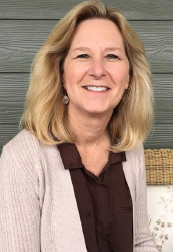
“Our hope is to get this
on the ballot in 2017.”
LYNDIA WILSON
Division Director,
Spokane Regional Health District (SRHD)
Spokane County
A work group of community activists in Spokane County has been meeting since January to explore the feasibility of a different kind of tax structure to raise funds for affordable housing: a 0.1% sales tax.
The group’s members come from a range of organizations and disciplines, including housing, health care, for-profit businesses, local government, and education. What they share, says Lyndia Wilson, a division director with Spokane Regional Health District (SRHD), is the recognition of how foundational affordable housing is to a community’s health. “From a public health perspective, housing is crucial,” she says. "Nothing else can really make a dent if people don’t have a home.”
(Last year, Lyndia co-authored SRHD’s in-depth report on Spokane County’s homelessness challenges, Missing the Foundation.)
In exploring a new sales tax, the Spokane work group has set its sights on the opportunities afforded by last year’s passage of HB 2263, which (among its many other options) gave local governments in Washington state the authority to impose a sales tax for public benefits like affordable housing and related services—conditioned upon voter approval.
Several members have had informal talks with Spokane County commissioners, who are open to considering putting this tax increase on the ballot if it’s well planned, Lyndia says. But as of early June, a consensus hadn’t been reached. “The struggle we’re having right now is that there are a lot of tax initiatives being considered. Our hope is to get this on the ballot in 2017.”
Work group members are currently working with housing and services agencies, collecting data to build a needs assessment. Rising to the top are the housing needs of low-income single adults, large families, and people on a fixed income like the elderly and the disabled. Lyndia gives the example of one school district in the city: “They had 350 homeless students last year. Some were from large families—and there was nothing available in that school district for those families.”
If they can’t get the measure on the county’s ballot, or get it passed, members’ back-up plan is to push for this initiative through the City of Spokane. Spokane Mayor David A. Condon recently launched the Housing Quality Task Force, which includes a focus on housing affordability. “And our biggest needs are in the city,” Lyndia concludes.
top /\
Local Support Critical for Federal Support
I’ve served as executive director of the Commission for more than 30 years. Being in this position has taught me a tremendous amount about the crucial impacts that affordable housing has on communities. All too often, though, I’m stuck at my desk or in meetings and don’t get to see the amazing housing that has been built all over the state using a wide array of funding sources, including the tax credits the Commission allocates.
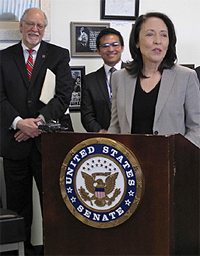
March 2016 in Seattle:
Senator Maria
Cantwell kicks off her statewide tour to build support for
expanding the Low Income Housing Tax Credit by 50%.
Senator Cantwell seeks to expand LIHTC
This spring, however, my staff and I have had the privilege to circumnavigate our state, accompanying Senator Maria Cantwell in her visits to LIHTC affordable-housing developments in Seattle, Tacoma, Spokane, Bremerton, Walla Walla, Bellingham, and Vancouver. These trips have been part of our efforts to raise awareness of the success of the LIHTC program. In mid-May, Senator Cantwell introduced a bill in the Senate, co-sponsored by Republican Senator Orrin Hatch of Utah, to expand this program by 50 percent. I’m convinced that our state and our nation desperately need this expanded federal support.
I’m including Senator Cantwell’s initiative in this issue because of how federal dollars for affordable housing interweave with local financial support. Today, 9% tax-credit funding is a scarce resource that communities must compete for. For every application that wins tax-credit support in our state, about twice as many applications are turned away. As mentioned earlier, when cities or counties can put in the “first dollar”—like Seattle and Bellingham can with their levy monies—this often serves as the demonstrated “grit” around which other funding sources can coalesce, leveraging that first dollar many times over.
Creating a groundswell
I’m very excited about the momentum that’s building for housing levies in communities all over our state.
We know what works. The stakes are incredibly high. We need to pitch in and work together to create a huge groundswell of support for these community-based levy efforts. They matter to all of us.
